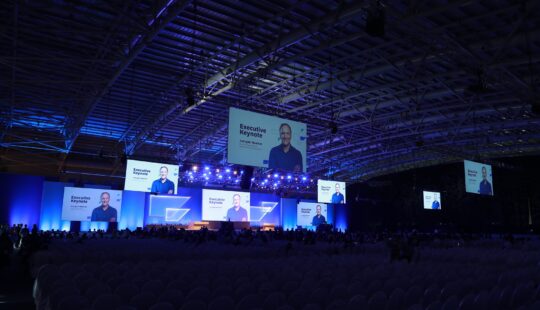SAP Cloud ALM, a cloud-based tool for application lifecycle management, already offers capabilities for the implementation, operation, and service of many SAP applications, including SAP S/4HANA and SAP SuccessFactors software.
Now SAP Cloud ALM will extend its capabilities to centrally operate Software-as-a-Service (SaaS) applications and custom extensions built and run on SAP Business Technology Platform (SAP BTP), including SAP BTP Cloud Foundry environment.
In an interview, Janko Budzisch, chief product owner for Operations Platforms at SAP, shares what this means for SAP BTP customers.
Q: SAP Cloud ALM has been available to customers for many years now as a cloud-based tool for SAP solutions. What is new with respect to support for SAP BTP?
A: In SAP BTP we saw a gap in particular for the custom-built applications on top of SAP BTP, Cloud Foundry environment. This was mainly due to the fact that both the Cloud Foundry environment and the Kyma environments of SAP BTP are being based on open-source technology. Thus, there was a strong wish to have SAP BTP support for OpenTelemetry capabilities, an open-source standard for observability.
Therefore, we introduced an OpenTelemetry-based approach with SAP Cloud ALM. This includes central tools to reduce the mean time to detect issues, plus local tools to debug and fix issues. These help reduce the mean time to resolve. The approach also comes with library support to enable observability for custom-built applications. We now take this approach for both customer-built applications and also SAP BTP-based SaaS applications.
Could you explain some of the new capabilities of SAP Cloud ALM for SAP BTP customers?
In the end, our approach is to enable observability based on our central operations platforms. This doesn’t mean we replace all local tools. Instead, we concentrate on the things that should be unified across all the different products in SAP, including applications provided by SAP BTP.
One of these capabilities is the alert management. We think it’s essential that customers have one central place to access integrated monitoring with their existing IT service management processes. As an example, customers typically have their own ticketing systems. The observability data coming out of the observability tooling generates events. For these events we prefer to have automatically generated tickets. Instead of doing this for every local tool, it’s a good idea to do this centrally with SAP Cloud ALM.
A second example is interfacing. We expose with SAP Cloud ALM raw data interfaces based on the OpenTelemetry standard, also with a centralized approach. Otherwise, if every tool would get handled in an isolated way, the target infrastructure of the customer would need to adapt to all the different application programming interfaces (APIs). We are really driving the strategy of centralizing problem detection and analysis. Plus, the integration with the local tools help to debug and to resolve problems.
Could you summarize what other capabilities are available in SAP Cloud ALM for SAP BTP services?
A major target of SAP Cloud ALM is to provide so-called end-to-end monitoring. One of the most interesting and known use cases here is integration and exception monitoring. Here we safeguard reliable data exchange for instance via SAP Integration Suite. We collect data from all the involved components — whether these are consumer or producer systems, or even integration components, so-called integration artefacts. Here we have the integration with SAP Integration Suite, the cloud integration, where we retrieve message artefacts. Examples are master data integration and the SAP Event Broker for SAP cloud applications service.
A second use case I’d like to stress is job and automation monitoring. This provides transparency regarding the monitoring of automation created using SAP Build Process Automation. These are processes or process steps that are executed automatically, like workflow management. We need to make sure, with our monitoring capabilities, that the processes are not interrupted and all is working.
A third use case is health monitoring. It checks the technical health of SAP BTP, such as for SAP BTP Neo environment, SAP S/4HANA Cloud, SAP BTP Cloud Foundry environment, and SAP Integration Suite. We have several technical KPIs the customer needs to know about so they can react appropriately. Also integrated in health monitoring is the monitoring of all applications built by the customer.
Some SAP BTP customers may already have application performance management tools which they would like to use or want integrated. How do we help them to integrate into our operations platform?
SAP Cloud ALM is an open platform. This means it’s clearly our target to expose via APIs all data to third-party tools. There are examples where customers are using third-party analysis capabilities, or we have customers that want to work with their own data lake across all the platforms. SAP Cloud ALM provides an OpenTelemetry-based approach to expose data to third-party APMs. The nice thing here is that we are not just doing this at the outbound side, it also includes the inbound side. So, if a customer has data somewhere else, they can import this data into SAP Cloud ALM.
There certainly is a lot of functionality for SAP BTP customers in SAP Cloud ALM. What would be the next steps for customers or partners that want to leverage SAP Cloud ALM for SAP BTP?
We should distinguish two use cases. The first is those who want to monitor their own built applications. Here you would use our instrumentation library, or monitoring, based on OpenTelemetry. This library helps to accelerate the whole instrumentation process. Let’s say you bind your application to this library and make the instrumentation visible in your application. Most of this is done via auto instrumentation. You don’t need to do something to your source code. It’s pure configuration that more or less gets the data from your own applications into SAP Cloud ALM.
The second use case is if you want to connect SaaS applications from SAP built on SAP BTP with SAP Cloud ALM. Here, we have descriptions in our expert portal on how to connect an SAP BTP-based SaaS offering with SAP Cloud ALM. With this you can send the data directly. This is also pre-configured and pre-instrumented. You only need to connect your SaaS service based on SAP BTP with the SAP Cloud ALM tenant. Then you get the data.
So, if you are a customer, go ahead and get your SAP Cloud ALM tenant today. It’s available as part of your subscription and support contract. Configure it and then you have all the functionality needed for monitoring SAP BTP.



